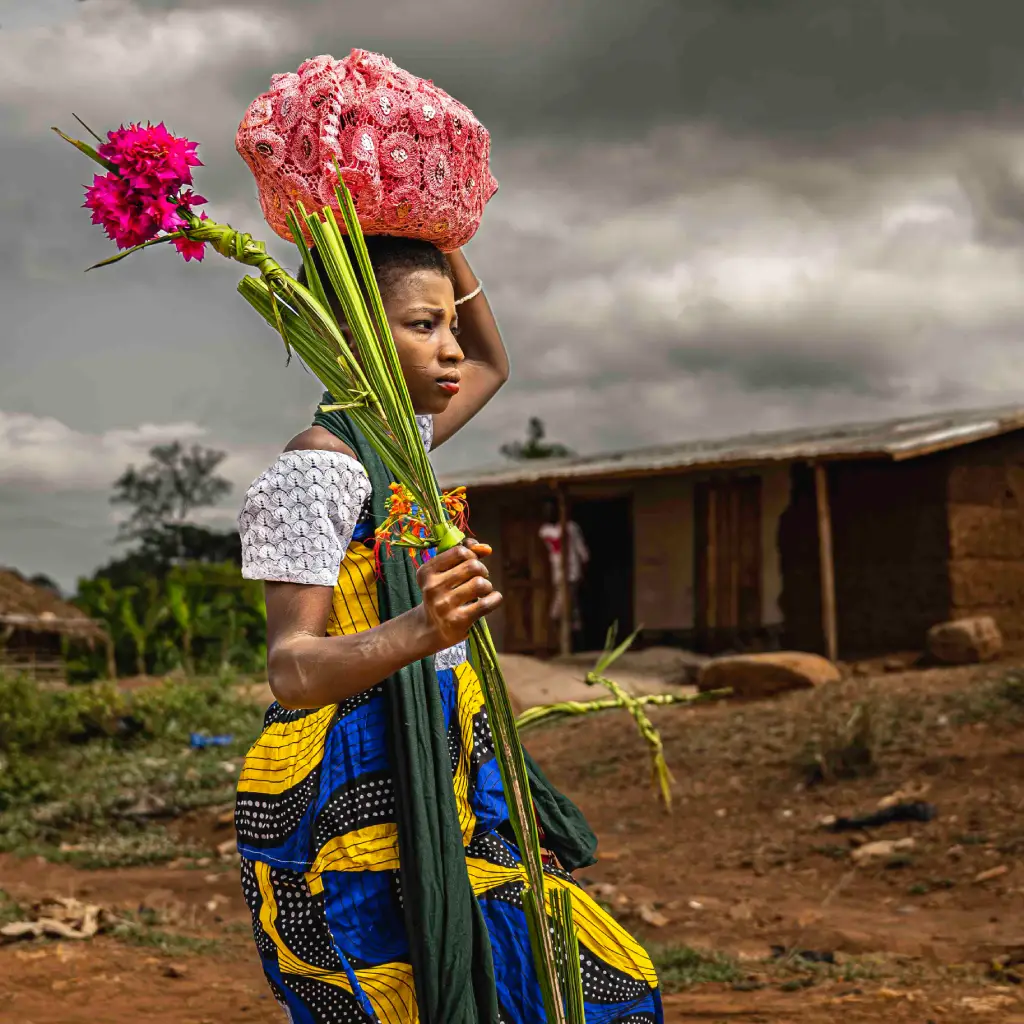Day 1: International Flight
Flight and arrival in Luanda. Transfer to the hotel.
Day 2: Calandula Falls
Journey to visit the spectacular Kalandula Falls, the second largest in all of Africa.
Day 3: Luanda – Lubango
Return to Luanda. In the afternoon, flight to Lubango.
Day 4: Lubango – Muila Tribe
Exploration of Huila province, located in the southwest of Angola. We will visit one of its most prominent tribes: the Muila, both the mountain and lowland groups. The former live on the edge of a spectacular cliff with astonishing views. The latter reside in villages, which we will visit. Made up of around 100,000 semi-nomadic members, the Muila are notable for preserving the legacy of their ancestors through the beauty of their adornments and hairstyles, known as nontombi. These consist of dreadlocks made from clay dyed red with reddish sand and other materials. Overnight in a camp in their village.
Day 5: Muila Tribe – Xangongo
Visit to the world’s largest baobab tree and the tank cemetery from Angola’s civil war (1975–2002). Afterwards, we will visit a Humbi tribe village, where we’ll see young girls wearing circular hairstyles as a rite of passage from childhood. Overnight in Xangongo.
Day 6: Xangongo – Oncocua
Journey to Oncocua to meet the Mutua, with whom we will spend the night. The Mutua are among the most well-known and photographed tribes not only in the country but across the continent. Bordering Namibia, they are recognised for the reddish hue of their skin and hairstyles, made using red sand and animal fat. We will learn how and why they do this. At night, the girls dance, adults talk around the fire, and children play. It will be fascinating to see how people live in a way unchanged for 10,000 years. Overnight in a camp in their village.
Day 7: Oncocua
We continue exploring the southern tribes of Angola, such as the Hakaona, known for their body adornments, unique hairstyles (especially among women, in a tradition passed from mother to daughter), and rich musical culture. We will also visit the Himba, perhaps the most spectacular tribe. Like the Mutua, the Himba women wear hairstyles made of clay and animal hair, but they also don headdresses made of goatskin and wear richly adorned garments full of beads and decorations. Return to Lubango for the night.
Day 8: Lubango – Namibe
Journey to Namibe, passing by the Leba Mountain viewpoint and Humpata. Visit to Mungongo Island in the middle of the desert—a fascinating spot that looks like something out of a post-apocalyptic film. Arrival in the city of Namibe, where we will spend the night after a walk through its peaceful streets, full of pastel-toned Portuguese colonial buildings.
Day 9: Namibe – Iona National Park – Namibe
Journey to Tombwa, exploring the Namib Desert and its unique landscapes, including the Chapel of Our Lady of the Navigators, perched on a cliff in a breathtaking setting. Afterwards, we’ll head further south to Iona National Park to witness where the dunes meet the sea. We will continue to the incredible “Martian” zone of the Pedras Vermelhas, where we will camp.
Day 10: Namib Desert – Lubango – Luanda
Journey back to Lubango; visit to the city, known for its many Art Deco buildings. In the afternoon, flight to Luanda.
Day 11: Luanda
Excursion to Miradouro da Lua, a beautiful viewpoint an hour south of Luanda made up of red clay pinnacles shaped by erosion. On the way, we’ll make a brief stop at the Museum of Slavery—Angola was the country from which the most slaves were sent to the Americas, nearly four million. Afterwards, we’ll continue to Kissama National Park for a safari in hopes of spotting wildlife. On the return, we will visit Luanda, noted for its Portuguese colonial buildings such as the Palácio de Ferro and the National Bank, as well as many period houses and beautiful churches, some adorned with colourful tiles. Overnight in Luanda.
Day 12: Return flight and end of our services



